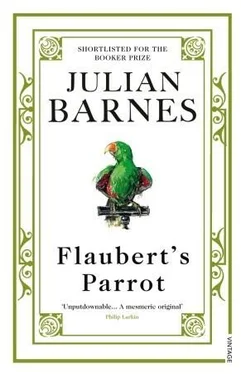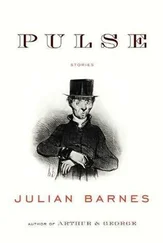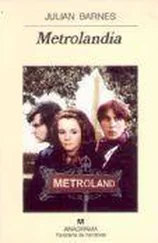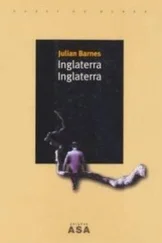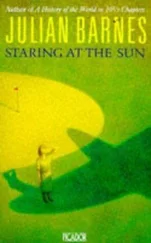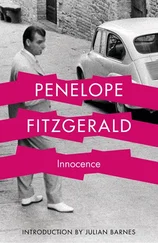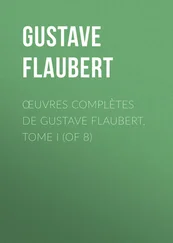Julian Barnes - Flaubert's Parrot
Здесь есть возможность читать онлайн «Julian Barnes - Flaubert's Parrot» весь текст электронной книги совершенно бесплатно (целиком полную версию без сокращений). В некоторых случаях можно слушать аудио, скачать через торрент в формате fb2 и присутствует краткое содержание. Город: New York, Год выпуска: 2011, ISBN: 2011, Издательство: Vintage International, Жанр: Современная проза, на английском языке. Описание произведения, (предисловие) а так же отзывы посетителей доступны на портале библиотеки ЛибКат.
- Название:Flaubert's Parrot
- Автор:
- Издательство:Vintage International
- Жанр:
- Год:2011
- Город:New York
- ISBN:9780307797858
- Рейтинг книги:4 / 5. Голосов: 1
-
Избранное:Добавить в избранное
- Отзывы:
-
Ваша оценка:
- 80
- 1
- 2
- 3
- 4
- 5
Flaubert's Parrot: краткое содержание, описание и аннотация
Предлагаем к чтению аннотацию, описание, краткое содержание или предисловие (зависит от того, что написал сам автор книги «Flaubert's Parrot»). Если вы не нашли необходимую информацию о книге — напишите в комментариях, мы постараемся отыскать её.
is by turns moving and entertaining, witty and scholarly, and a tour de force of seductive originality.
Flaubert's Parrot — читать онлайн бесплатно полную книгу (весь текст) целиком
Ниже представлен текст книги, разбитый по страницам. Система сохранения места последней прочитанной страницы, позволяет с удобством читать онлайн бесплатно книгу «Flaubert's Parrot», без необходимости каждый раз заново искать на чём Вы остановились. Поставьте закладку, и сможете в любой момент перейти на страницу, на которой закончили чтение.
Интервал:
Закладка:
That seemed to be it, really. All the same, I rang M. Lucien Andrieu and explained my interests in a general way. He invited me to call the next day. As he gave me the address – rue de Lourdines – I imagined the house he was speaking from, the solid, bourgeois house of a Flaubert scholar. The mansard roof pierced with an oeil-de-boeuf ; the pinkish brick, the Second Empire trimmings; inside, cool seriousness, glass-fronted bookcases, waxed boards and parchment lampshades; I breathed a male, clubby smell.
My briefly-constructed house was an impostor, a dream, a fiction. The real house of the Flaubert scholar was across the river in south Rouen, a run-down area where small industries squat among rows of red-brick terrace houses. Lorries look too big for the streets; there are few shops, and almost as many bars; one was offering tête de veau as its plat du jour . Just before you get to the rue de Lourdines there is a signpost to the Rouen abattoir.
Monsieur Andrieu was waiting for me on his doorstep. He was a small, elderly man wearing a tweed jacket, tweed carpet slippers and a tweed trilby. There were three ranks of coloured silk in his lapel. He took off his hat to shake hands, then replaced it; his head, he explained, was rather fragile in the summer. He was to keep his tweed hat on all the time we were in the house. Some people might have thought this a little cranky, but I didn’t. I speak as a doctor.
He was seventy-seven, he informed me, the secretary and oldest surviving member of the Société des Amis de Flaubert. We sat on either side of a table in a front room whose walls were crowded with bric-à-brac: commemorative plates, Flaubert medallions, a painting of the Gros Horloge which M. Andrieu had done himself. It was small and crowded, curious and personal: like a neater version of Félicité’s room, or of Flaubert’s pavilion. He pointed out a cartoon portrait of himself, drawn by a friend; it showed him as a gunslinger with a large bottle of calvados protruding from his hip pocket. I should have asked the reason for such a ferocious characterisation of my mild and genial host; but I didn’t. Instead, I took out my copy of Enid Starkie’s Flaubert: The Making of a Master and showed him the frontispiece.
‘C’est Flaubert, ça?’ I asked, just for a final confirmation.
He chuckled.
‘C’est Louis Bouilhet. Oui, oui, c’est Bouilhet.’ It was clearly not the first time he had been asked. I checked one or two more details with him, and then mentioned the parrots.
‘Ah, the parrots. There are two of them.’
‘Yes. Do you know which is the true one and which is the impostor?’
He chuckled again.
‘They set up the museum at Croisset in 1905,’ he replied. ‘The year of my birth. Naturally, I was not there. They gathered together what material they could find – well, you’ve seen it for yourself.’ I nodded. ‘There wasn’t much. Many things had been dispersed. But the curator decided that there was one thing they could have, and that was Flaubert’s parrot. Loulou. So they went to the Museum of Natural History and said, Can we please have Flaubert’s parrot back. We want it for the pavilion. And the Museum said, Of course, come with us.’
Monsieur Andrieu had told this story before; he knew its pauses.
‘So, they took the curator to where they kept the reserve collection. You want a parrot? they said. Then we go to the section of the birds. They opened the door, and they saw in front of them… fifty parrots. Une cinquantaine de perroquets!
‘What did they do? They did the logical thing, the intelligent thing. They came back with a copy of Un cœur simple , and they read to themselves Flaubert’s description of Loulou.’ Just as I had done the day before. ‘And then they chose the parrot which looked most like his description.
‘Forty years later, after the last war, they started making the collection at the Hôtel-Dieu. They in their turn went back to the Museum and said, Please can we have Flaubert’s parrot. Of course, said the Museum, take your pick, but make sure you get the right one. So they too consulted Un cœur simple , and chose the parrot which most resembled Flaubert’s description. And that’s how there are two parrots.’
‘So the pavilion at Croisset, which had the first choice, must have the true parrot?’
M. Andrieu looked non-committal. He pushed his tweed trilby slightly further back on his head. I took out my photographs. ‘But if so, what about this?’ I quoted the familiar description of the parrot, and pointed to the non-conforming forehead and breast of the Croisset version. Why should the parrot chosen second look more like the one in the book than the parrot chosen first?
‘Well. You have to remember two things. One, Flaubert was an artist. He was a writer of the imagination. And he would alter a fact for the sake of a cadence; he was like that. Just because he borrowed a parrot, why should he describe it as it was? Why shouldn’t he change the colours round if it sounded better?
‘Secondly, Flaubert returned his parrot to the Museum after he’d finished writing the story. That was in 1876. The pavilion was not set up until thirty years later. Stuffed animals get the moth, you know. They fall apart. Félicité’s did, after all, didn’t it? The stuffing came out of it.’
‘Yes.’
‘And perhaps they change colour with time. Of course, I am not an expert in the stuffing of animals.’
‘So you mean either of them could be the real one? Or, quite possibly, neither?’
He spread his hands slowly on the table, in a conjuror’s calming gesture. I had a final question.
‘Are there still all those parrots left at the Museum? All fifty of them?’
‘I don’t know. I don’t think so. You have to know that in the Twenties and Thirties, when I was young, there was a great fashion for stuffed animals and birds. People had them in their sitting-rooms. They thought they were pretty. So, a lot of museums sold off parts of their collections which they didn’t need. Why should they hold on to fifty Amazonian parrots? They would only decay. I don’t know how many they have now. I should think the Museum got rid of most of them.’
We shook hands. On the doorstep M. Andrieu raised his hat to me, briefly uncovering his fragile head to the August sun. I felt pleased and disappointed at the same time. It was an answer and not an answer; it was an ending and not an ending. As with Félicité’s final heartbeats, the story was dying away ‘like a fountain running dry, like an echo disappearing’. Well, perhaps that’s as it should be.
It was time to pay farewell. Like a conscientious doctor, I made the rounds of Flaubert’s three statues. What shape was he in? At Trouville his moustache still needs repair; though the patching on his thigh now looks less conspicuous. At Barentin, his left leg is beginning to split, there is a hole in the corner of his jacket, and a mossy discoloration spots his upper body; I stared at the greenish marks on his chest, half-closed my eyes, and tried to turn him into a Carthaginian interpreter. At Rouen, in the place des Carmes, he is structurally sound, confident in his alloy of 93 per cent copper and 7 per cent tin; but he still continues to streak. Each year he seems to cry a couple more cupreous tears, which brightly vein his neck. This isn’t inappropriate: Flaubert was always a great weeper. The tears continue on down his body, giving him a fancy waistcoat and putting thin side-stripes on his legs, as if he were wearing dress-trousers. This too isn’t inappropriate: it’s a reminder that he enjoyed salon life as well as his Croisset retreat.
A few hundred yards north, at the Museum of Natural History, they took me upstairs. This was a surprise: I’d assumed that reserve collections were always held in cellars. Nowadays they probably have leisure centres down there instead: cafeterias and wall-charts and video-games and everything to make learning easy. Why are they so keen to turn learning into a game? They love to make it childish, even for adults. Especially for adults.
Читать дальшеИнтервал:
Закладка:
Похожие книги на «Flaubert's Parrot»
Представляем Вашему вниманию похожие книги на «Flaubert's Parrot» списком для выбора. Мы отобрали схожую по названию и смыслу литературу в надежде предоставить читателям больше вариантов отыскать новые, интересные, ещё непрочитанные произведения.
Обсуждение, отзывы о книге «Flaubert's Parrot» и просто собственные мнения читателей. Оставьте ваши комментарии, напишите, что Вы думаете о произведении, его смысле или главных героях. Укажите что конкретно понравилось, а что нет, и почему Вы так считаете.
